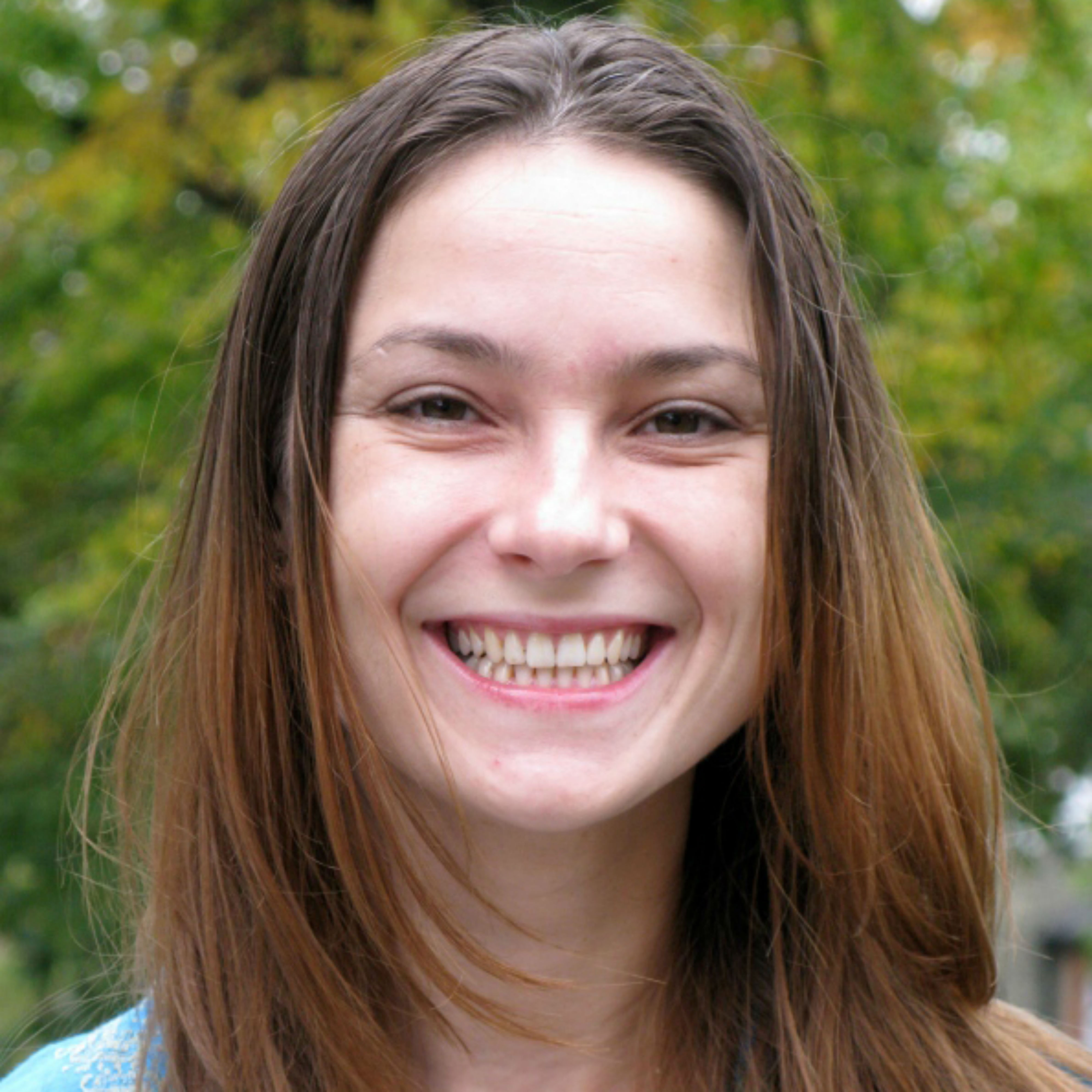Email
helge@essex.ac.ukTelephone
+44 (0) 1206 873533
Location
2.715, Colchester Campus
Biography
My research is about how our sense of body gives rise to our sense of self. I use EEG/ERPs and psychophysical methods to investigate how tactile and visual processing mechanisms contribute to body representation. I'm a member of the British Association for Cognitive Neuroscience, the Experimental Psychology Society, and the European Brain and Behaviour Society. I joined the Department of Psychology here at Essex in 2009. Before that, I did my BSc in Psychology with Cognitive Science at University College London. After that, I worked at the MRC Cognition and Brain Sciences Unit in Cambridge, investigating tactile attention and body representation in healthy adults and neuropsychological patients (with Prof Anthony Marcel). Then I did my PhD on the perception of vibrations (in touch and hearing) at Birkbeck, University of London (supervised by Prof Martin Eimer). After my PhD, I returned to University College London to work on the role of sensorimotor learning in the imitation of actions (with Prof Cecilia Heyes). After that, I was at the Cognitive Neuroscience Research Unit at City University London, investigating tactile spatial attention and body representation in perception and action (with Prof Bettina Forster).
Research interests
Visual body representations and effects of body image in eating and body dysmorphic disorders
Somatosensory processes, multisensory processes involving somatosensation
Sensorimotor learning, neural plasticity, integration of external objects/tools into the body schema
Mirror touch, action representation, and social cognition
The bodily self in depersonalisation-derealisation disorder
Interoception and Anxiety
Examining multidimensions of interoception and adult and child anxiety
Current research
The bodily self
Visual remapping of touch (mirror touch)
Visual body representation
Eating and body dysmorphic disorders
Healthy active ageing
Depersonalisation-derealisation disorder
Current teaching responsibilities
The Social Brain (PS106)
Brain and Behaviour (PS411)
The Neuroscience of Human Nature (PS495)
Psychopathology (PS504)
Believing is Seeing. The power of belief and suggestion on the mind and brain (PS508)
Research Management (PS912)
Advanced Brain and Behaviour (PS943)
Current supervision
Previous supervision

Degree subject: Biosocial Research
Degree type: Doctor of Philosophy
Awarded date: 16/1/2025

Degree subject: Computer Science
Degree type: Doctor of Philosophy
Awarded date: 30/9/2024

Degree subject: Computer Science
Degree type: Doctor of Philosophy
Awarded date: 4/7/2023

Degree subject: Psychology
Degree type: Doctor of Philosophy
Awarded date: 3/3/2023

Degree type: Master of Science
Awarded date: 5/10/2022

Degree subject: Psychology
Degree type: Doctor of Philosophy
Awarded date: 30/8/2022

Degree subject: Psychology
Degree type: Doctor of Philosophy
Awarded date: 1/7/2022

Degree subject: Neuropsychology
Degree type: Doctor of Philosophy
Awarded date: 21/6/2022

Degree subject: Psychology
Degree type: Doctor of Philosophy
Awarded date: 8/4/2021

Degree type: Doctor of Philosophy
Awarded date: 18/11/2020

Degree subject: Physiotherapy
Degree type: Doctor of Philosophy
Awarded date: 29/5/2019

Degree subject: Psychology
Degree type: Doctor of Philosophy
Awarded date: 11/5/2017

Degree subject: Psychology
Degree type: Doctor of Philosophy
Awarded date: 25/2/2016
Publications (3)
Constant, M., Mandal, A., Asanowicz, D., Panek, B., Kotlewska, I., Yamaguchi, M., Gillmeister, H., Kerzel, D., Luque, D., Molinero, S., Millán, AV., Pesciarelli, F., Borelli, E., Ramzaoui, H., Beck, M., Somon, B., Desantis, A., Castellanos, MC., Martín-Arévalo, E., Manini, G., Capizzi, M., Gokce, A., Ozer, D., Soyman, E., Yılmaz, E., Eayrs, J., London, R., Steendam, ST., Frings, C., Pastötter, B., Szaszkó, B., Baess, P., Ayatollahi, S., Leon, G., Wetzel, N., Widmann, A., Cao, L., Low, X., Costa, TL., Chelazzi, L., Monachesi, B., Dr., S-MKJ., Knopf, L., Itier, R., Meixner, JM., Jost, K., Botes, A., Braddock, CA., Li, D., Nowacka, A., Quenault, M., Scanzi, D., Torrance, T., Corballis, PM., Laera, G., Kliegel, M., Welke, D., Mushtaq, F., Pavlov, YG. and Liesefeld, HR., (2025). A multilab investigation into the N2pc as an indicator of attentional selectivity: Direct replication of Eimer (1996).
Constant, M., Mandal, A., Asanowicz, D., Yamaguchi, M., Gillmeister, H., Kerzel, D., Luque, D., Pesciarelli, F., Fehr, T., Mushtaq, F., Pavlov, YG. and Liesefeld, HR., (2023). A multilab investigation into the N2pc as an indicator of attentional selectivity: Direct replication of Eimer (1996).
Constant, M., Mandal, A., Asanowicz, D., Panek, B., Kotlewska, I., Yamaguchi, M., Gillmeister, H., Kerzel, D., Luque, D., Molinero, S., Pesciarelli, F., Borelli, E., Ramzaoui, H., Beck, M., Somon, B., Desantis, A., Castellanos, MC., Martín-Arévalo, E., Manini, G., Capizzi, M., Gokce, A., Ozer, D., Soyman, E., Yılmaz, E., Eayrs, J., London, R., Steendam, ST., Frings, C., Pastötter, B., Szaszkó, B., Baess, P., Ayatollahi, S., Leon, G., Wetzel, N., Widmann, A., Cao, L., Low, X., Costa, TL., Chelazzi, L., Monachesi, B., Dr., S-MKJ., Knopf, L., Itier, R., Meixner, JM., Jost, K., Botes, A., Braddock, CA., Li, D., Nowacka, A., Quenault, M., Scanzi, D., Torrance, T., Corballis, PM., Laera, G., Kliegel, M., Welke, D., Mushtaq, F., Pavlov, YG. and Liesefeld, HR., (2023). A multilab investigation into the N2pc as an indicator of attentional selectivity: Direct replication of Eimer (1996).
Journal articles (38)
Navyte, G., Gillmeister, H. and Kumari, M., (2024). Interpersonal Touch and the Importance of Romantic Partners for Older Adults’ Neuroendocrine Health. Psychoneuroendocrinology. 159, 106414-106414
Salami, A., Andreu-Perez, J. and Gillmeister, H., (2024). Finding neural correlates of depersonalisation/derealisation disorder via explainable CNN-based analysis guided by clinical assessment scores. Artificial Intelligence in Medicine. 149, 102755-102755
Gillmeister, H., Šmate, I., Savva, D., Li, H., Parapadakis, C. and Adler, J., (2024). Confrontation with others' emotions changes bodily resonance differently in those with low and high levels of depersonalization. Philosophical Transactions of the Royal Society B: Biological Sciences. 379 (1908), 20230248-
Hostler, TJ., Poerio, GL., Nader, C., Mank, S., Lin, AC., Villena-Gonzalez, M., Lemera, Shares, S., Yoloma, Moongem, Plutzik, N., Ahuja, NK., Baker, DH., Bannister, S., Barratt, EL., Bedwell, SA., Billot, PE., Blakey, E., Cardini, F., Cash, DK., Davis, NJ., Del Sette, BM., Erfanian, M., Flockton, JR., Fredborg, B., Gillmeister, H., Gray, E., Haigh, SM., Heisick, LL., McErlean, AJ., Klausen, HB., Kondo, HM., Maas, F., Maurand, LT., McKay, LS., Mozzoni, M., Navyte, G., Ortega-Balderas, JA., Palmer-Cooper, EC., Richard, CAH., Roberts, N., Romei, V., Schoeller, F., Shaw, SD., Simner, J., Smith, SD., Specker, E., Succi, A., Valtakari, NV., Weinheimer, J. and Zehetgrube, J., (2024). Research Priorities for Autonomous Sensory Meridian Response: An Interdisciplinary Delphi Study. Multisensory Research. 37 (6-8), 499-528
Poerio, GL., Succi, A., Swart, T., Romei, V. and Gillmeister, H., (2023). From touch to tingles: Assessing ASMR triggers and their consistency over time with the ASMR Trigger Checklist (ATC).. Consciousness and Cognition. 115, 103584-103584
Salami, A., Andreu-Perez, J. and Gillmeister, H., (2022). EEG-ITNet: An Explainable Inception Temporal Convolutional Network for Motor Imagery Classification. IEEE Access. 10, 36672-36685
Charidza, CA. and Gillmeister, H., (2022). Differential beta desynchronisation responses to dynamic emotional facial expressions are attenuated in higher trait anxiety and autism.. Cognitive, Affective and Behavioral Neuroscience. 22 (6), 1404-1420
Gillmeister, H., Succi, A., Romei, V. and Poerio, GL., (2022). Touching you, touching me: Higher incidence of mirror-touch synaesthesia and positive (but not negative) reactions to social touch in Autonomous Sensory Meridian Response. Consciousness and Cognition. 103, 103380-103380
Coleman, C. and Gillmeister, H., (2022). Body image and self-perception in women with navel piercings. PLOS ONE. 17 (9), e0274099-e0274099
Groves, K., Kennett, S. and Gillmeister, H., (2020). Evidence for altered configural body processing in women at risk of disorders characterized by body image disturbance. British Journal of Psychology. 111 (3), 508-535
Salami, A., Andreu-Perez, J. and Gillmeister, H., (2020). Symptoms of depersonalisation/derealisation disorder as measured by brain electrical activity: A systematic review. Neuroscience and Biobehavioral Reviews. 118, 524-537
Cooke, J., Poch, C., Gillmeister, H., Costantini, M. and Romei, V., (2019). Oscillatory properties of functional connections between sensory areas mediate crossmodal illusory perception. The Journal of Neuroscience. 39 (29), 5711-5718
Rigato, S., Bremner, AJ., Gillmeister, H. and Banissy, MJ., (2019). Interpersonal representations of touch in somatosensory cortex are modulated by perspective. Biological Psychology. 146, 107719-107719
Gillmeister, H., Stets, M., Grigorova, M. and Rigato, S., (2019). How do bodies become special? Electrophysiological evidence for the emergence of body-related cortical processing in the first 14 months of life.. Developmental Psychology. 55 (10), 2025-2038
Adler, J. and Gillmeister, H., (2019). Bodily self‐relatedness in vicarious touch is reflected at early cortical processing stages. Psychophysiology. 56 (12), e13465-
(2019). Supplemental Material for How Do Bodies Become Special? Electrophysiological Evidence for the Emergence of Body-Related Cortical Processing in the First 14 Months of Life. Developmental Psychology
Groves, K., Kennett, S. and Gillmeister, H., (2018). Early visual ERPs show stable body-sensitive patterns over a 4-week test period. PLoS ONE. 13 (2), e0192583-e0192583
Schabinger, N., Gillmeister, H., Berti, S., Michal, M., Beutel, ME. and Adler, J., (2018). Detached and distracted: ERP correlates of altered attentional function in depersonalisation. Biological Psychology. 134, 64-71
Groves, K., Kennett, S. and Gillmeister, H., (2018). Affective responses to body stimuli: comparing male and female bodies with cropped heads and masked faces. Journal of Cognitive Psychology. 30 (7), 754-770
Gillmeister, H., Bowling, N., Rigato, S. and Banissy, MJ., (2017). Inter-individual differences in vicarious tactile perception: A view across the lifespan in typical and atypical populations. Multisensory Research. 30 (6), 485-508
Groves, K., Kennett, S. and Gillmeister, H., (2017). Evidence for ERP biomarkers of eating disorder symptoms in women.. Biological Psychology. 123, 205-219
Adler, J., Schabinger, N., Michal, M., Beutel, ME. and Gillmeister, H., (2016). Is that me in the mirror? Depersonalisation modulates tactile mirroring mechanisms. Neuropsychologia. 85, 148-158
Gillmeister, H., (2014). A new perceptual paradigm to investigate the visual remapping of others’ tactile sensations onto one’s own body shows “mirror touch” for the hands. Frontiers in Psychology. 5 (FEB), 95-
Simpson, A., Cooper, NR., Gillmeister, H. and Riggs, KJ., (2013). Seeing triggers acting, hearing does not trigger saying: Evidence from children?s weak inhibition. Cognition. 128 (2), 103-112
Gillmeister, H., Cantarella, S., Gheorghiu, AI. and Adler, J., (2013). Object-Guided Spatial Selection in Touch Without Concurrent Changes in the Perceived Location of the Hands. Experimental Psychology. 60 (1), 64-70
Gillmeister, H. and Forster, B., (2012). Hands behind your back: effects of arm posture on tactile attention in the space behind the body. Experimental Brain Research. 216 (4), 489-497
Gillmeister, H. and Forster, B., (2012). Adverse effects of viewing the hand on tactile-spatial selection between fingers depend on finger posture. Experimental Brain Research. 221 (3), 269-278
Forster, B. and Gillmeister, H., (2011). ERP investigation of transient attentional selection of single and multiple locations within touch. Psychophysiology. 48 (6), 788-796
Gillmeister, H., Adler, J. and Forster, B., (2010). Object-guided Spatial Attention in Touch: Holding the Same Object with Both Hands Delays Attentional Selection. Journal of Cognitive Neuroscience. 22 (5), 931-942
Gillmeister, H., Sambo, CF. and Forster, B., (2010). Which finger? Early effects of attentional selection within the hand are absent when the hand is viewed. European Journal of Neuroscience. 31 (10), 1874-1881
Gillmeister, H. and Forster, B., (2010). Vision enhances selective attention to body-related information. Neuroscience Letters. 483 (3), 184-188
Sambo, CF., Gillmeister, H. and Forster, B., (2009). Viewing the body modulates neural mechanisms underlying sustained spatial attention in touch. European Journal of Neuroscience. 30 (1), 143-150
Gillmeister, H., Catmur, C., Liepelt, R., Brass, M. and Heyes, C., (2008). Experience-based priming of body parts: A study of action imitation. Brain Research. 1217, 157-170
Catmur, C., Gillmeister, H., Bird, G., Liepelt, R., Brass, M. and Heyes, C., (2008). Through the looking glass: counter‐mirror activation following incompatible sensorimotor learning. European Journal of Neuroscience. 28 (6), 1208-1215
Press, C., Gillmeister, H. and Heyes, C., (2007). Sensorimotor experience enhances automatic imitation of robotic action. Proceedings of the Royal Society B: Biological Sciences. 274 (1625), 2509-2514
Gillmeister, H. and Eimer, M., (2007). Tactile enhancement of auditory detection and perceived loudness. Brain Research. 1160 (1), 58-68
Press, C., Gillmeister, H. and Heyes, C., (2006). Bottom‐up, not top‐down, modulation of imitation by human and robotic models. European Journal of Neuroscience. 24 (8), 2415-2419
Marcel, A., Postma, P., Gillmeister, H., Cox, S., Rorden, C., Nimmo-Smith, I. and Mackintosh, B., (2004). Migration and fusion of tactile sensation—premorbid susceptibility to allochiria, neglect and extinction?. Neuropsychologia. 42 (13), 1749-1767
Book chapters (1)
Vibell, J., Gillmeister, H., Sel, A., Haggarty, CJ., Van Velzen, J. and Forster, B., (2023). Electroencephalography of Touch. In: Neuromethods. Springer US. 431- 449. 9781071630679
Conferences (5)
Armani, F., Daly, I., Vernitski, A., Gillmeister, H. and Scherer, R., (2024). Maths Anxiety and cognitive state monitoring for neuroadaptive learning systems using electroencephalography
De Feo, V., Pansara, Z., Cinel, C., Gillmeister, H. and Navyte, G., (2024). Towards an Accurate Measure of Emotional Pupil Dilation Responses: A Model for Removing the Effect of Luminosity
Salami, A., Andreu-Perez, J. and Gillmeister, H., (2020). Towards Decoding of Depersonalisation Disorder Using EEG: A Time Series Analysis Using CDTW
Calvo-Merino, B., Jones, A., Gillmeister, H., Tziraki, M. and Forster, B., (2012). The influence of experience on aesthetic processing: insight from ballet dancers watching dance postures
Forster, B. and Gillmeister, H., (2009). VIEWING FINGERS OF THE SAME HAND CAN DISTURB TACTILE ATTENTIONAL SELECTION
2023
RESTED - REbalancing circadian rhythm of sleep and heart rate To Ease Dissociative symptoms
Wellcome Trust
2021
The estranged self � Exploring the dream continuity of phenomenological self-detachment in Depersonalisation-derealisation disorder
International Association for the Scientific study of dreams
2017
Extraordinary bodies: people's initial perceptions of atypical bodies and disabilities, and can we change them?
British Academy












